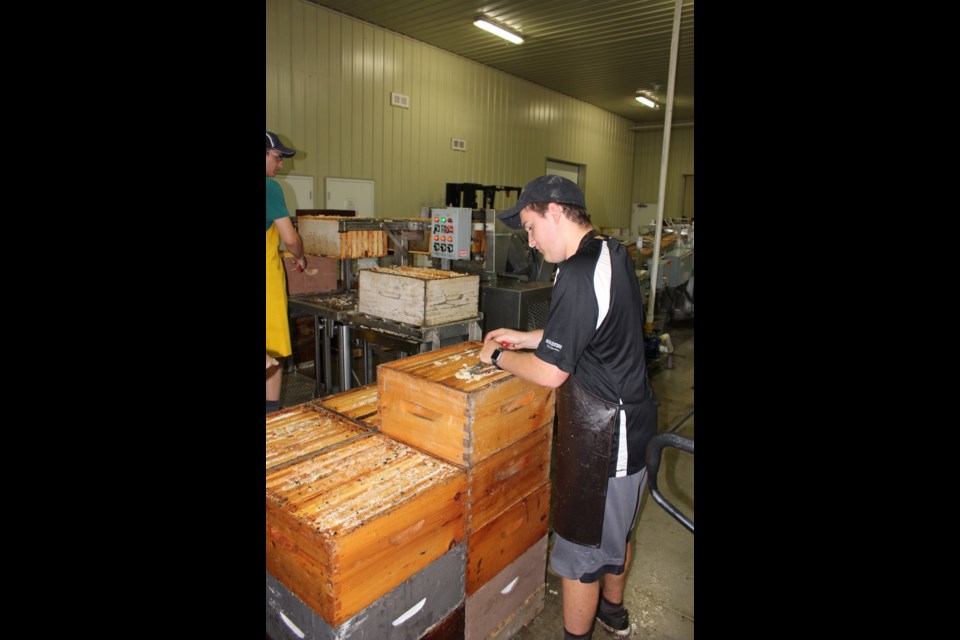Honey is a very natural product, but there is still an extensive process to get it from the beehive to the consumer.
Friday some 75 people, many visitors to the nearby Good Spirit Provincial Park, had an opportunity to get a closer look at the process by taking part in a tour of Howland’s Honey.
Howland’s Honey is a third generation beekeeping operation situated one mile south of Good Spirit Lake Provincial Park.
“Wink (Howland) founded the farm in 1976,” explained Danny Wasylenchuk, who now operates the farm with his wife Sasha, the daughter of the late Wink Howland. “He essentially bought it in ’76 and got a couple hives of bees as something to do in summer.”
It wasn’t long before Wink was selling honey to a few people, and then to more people, and from there came more hives, and in time it became a business, said Wasylenchuk.
Today, Howland’s Honey is a major producer of honey, with 1,000 honey producing hives, and another 600-800 nucleus hives, smaller units centred on a new queen.
As for bees, Wasylenchuk said as an average for a healthy producing hive there are 60,000 bees.
The bees collect nectar, which is turned into honey, over a large region of east central Saskatchewan.
“We have our bees spread over a very large area,” said Wasylenchuk, adding it goes to a few miles East of Highway #9, to west of Highway #47.
The bees forage locally on the nectar of wildflowers, clover, alfalfa and canola. Wasylenchuk said canola is the key crop.
“It’s probably the overwhelming majority of what’s available to bees in the province,” he said.
It’s a case of finding a good area, and then permission from the farmer “to put bees there,” he said, adding typically a farmer is given honey in exchange for allowing bees to be kept on the land.
The provincial average has a hive producing 170-pounds of honey over the summer.
“Our five-year average in 300,” said Wasylenchuk, adding it can range like grain production in farming with some years a hive hitting 400-pounds, to below the Saskatchewan average. “… It depends on the year.”
So far Wasylenchuk said 2018 is looking to be a good year, but there are still a number of weeks of production ahead, and production can be affected by the weather, with good moisture needed to produce the base nectar.
“We start pulling boxes right around the 15th of July, and we’re probably taking the last boxes off the September long (weekend),” said Wasylenchuk.
The boxes are sections of a hive the bees have filled with honey already.
The boxes are taken to the main facility where the honey is extracted and packaged.
Between field workers collecting boxes and staff in the processing facility Howland’s Honey employ about 13 in the summer season.
“We have the capacity to go bigger … but right now it’s very comfortable,” said Wasylenchuk.
Most of the honey goes out as a pure product although Howland’s Honey is doing a chocolate and a cinnamon honey.
“Variety is the spice of life,” offered Wasylenchuk with a smile. He said the flavoured products do give customers something different to try, but they are keeping it simple with such basic ingredients added to their honey.
“It’s something a little different to spread on your toast.”
The honey is marketed through Costco stores in the province, a number of independent Co-ops, various farmers’ markets and other locations, said Wasylenchuk.



